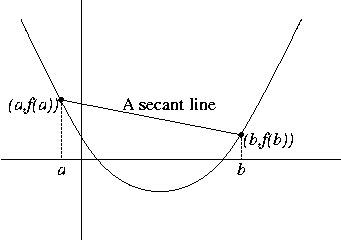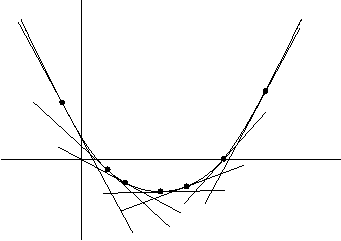 |
 |
| Dror Bar-Natan: Classes: 2002-03: Math 157 - Analysis I: | (113) |
Next: Homework Assignment 11
Previous: Class Notes for the Week of November 11 (9 of 9) |
We are skipping the appendix on convexity of Spivak's Chapter 11, but it is still worthwhile to take something from it (without proof):
 |
 |
Theorem. The following are equivalent, for a function ![]() defined on some interval
defined on some interval ![]() (assuming
(assuming ![]() is such that these statements make
sense):
is such that these statements make
sense):
If any of these statements holds, we say that ``![]() is convex''. There is a
similar theorem with all inequalities reversed, and then the name is ``
is convex''. There is a
similar theorem with all inequalities reversed, and then the name is ``![]() is concave''.
is concave''.